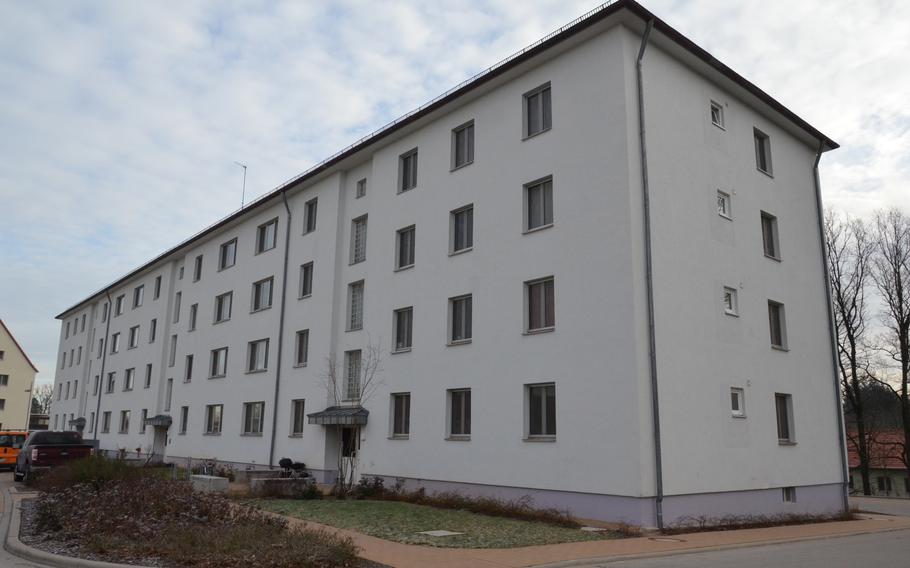
Military family housing in Katterbach, Germany, part of U.S. Army Garrison Ansbach, which had the lowest rating in a recent Army housing survey. (U.S. Army)
KAISERSLAUTERN, Germany — Soldiers and their families in Europe give government housing substandard marks, while some serving in Asia were more upbeat, according to annual survey results.
Concerns reported by soldiers worldwide who participated in the 2025 Army tenant satisfaction survey included mold and pest infestations, cramped living conditions and security breaches, leading to theft and privacy invasions, according to a survey summary the Army provided to Stars and Stripes.
Some of the chief concerns among family housing tenants in all survey areas included overcrowding and outdated facilities, an unfair housing allocation process, “depressing” living conditions and inadequate trash management.
“Many of our government-owned units in our housing areas are roughly 70 years old and lack some of the modern amenities that our families might be accustomed to prior to arriving in Europe,” Mark Heeter, a spokesman for Installation Command-Europe, said in a statement Wednesday.
In Europe, the Army plans to make significant investments “to either upgrade, replace or build new Army-owned family housing to a standard similar to housing at installations in the United States,” Heeter said.
That work includes construction at U.S. Army Garrison Italy that he called the largest overseas housing project in the world.
Out of 16 installations in regions throughout the U.S., the Pacific and Europe, five of the six lowest-rated family housing communities are in Germany or Italy.
U.S. Army Garrison Ansbach’s housing scored 59.1 out of 100, the only post to receive a rating of poor, indicating tenants’ “strong displeasure with the property and/or the level of service” and the need for immediate improvements.
“We are currently evaluating and diving deep into the survey results for all our garrisons on an individual basis and will be looking at Ansbach and the others to identify trends and areas of improvement,” Heeter said.
The other five locations, from the bottom up, in satisfaction were Stuttgart, Kwajalein Atoll in the Pacific and Rheinland-Pfalz, landing in the below-average range; and Wiesbaden, Germany, and U.S. Army Garrison Italy in the average range.
The highest overall satisfaction scores came from Fort Eisenhower in Georgia, recently renamed Fort Gordon; Hawthorne Army Depot, Calif.; Dugway Proving Ground in Utah and U.S. Army Garrison Daegu, South Korea.
For the first time, this year’s survey included service members without families. The Army annually seeks feedback on housing and services to prioritize areas for improvement, the service said in a statement Wednesday about the findings.
The family housing survey was conducted from March to May. Surveys were sent to 9,095 homes, and a little more than 1 in 5 responded, according to CEL & Associates, the consulting company hired by the Army to do the survey.
The unaccompanied housing survey was distributed to 93,725 tenants, with an 11% response rate. The consulting company said the number of responses is typical for the demographic in a first-year survey.
Europe as a region scored the worst overall among barracks residents, with a “poor” satisfaction score of 63.1. Pacific housing wasn’t rated much higher, with a below average score of 65.9.
Wiesbaden’s barracks had the lowest satisfaction rating in Europe, ranking 41st out of 46 installations, according to the survey summary.
Some results were encouraging for Europe, Heeter said. For example, U.S. Army Garrison Benelux received an award for providing a high level of service to barracks residents, he said.
In family housing, he added, Europe’s total score either held steady or improved in property condition, service and satisfaction compared with last year’s results.
The command remains committed to improving homes and the services it provides, Heeter said.